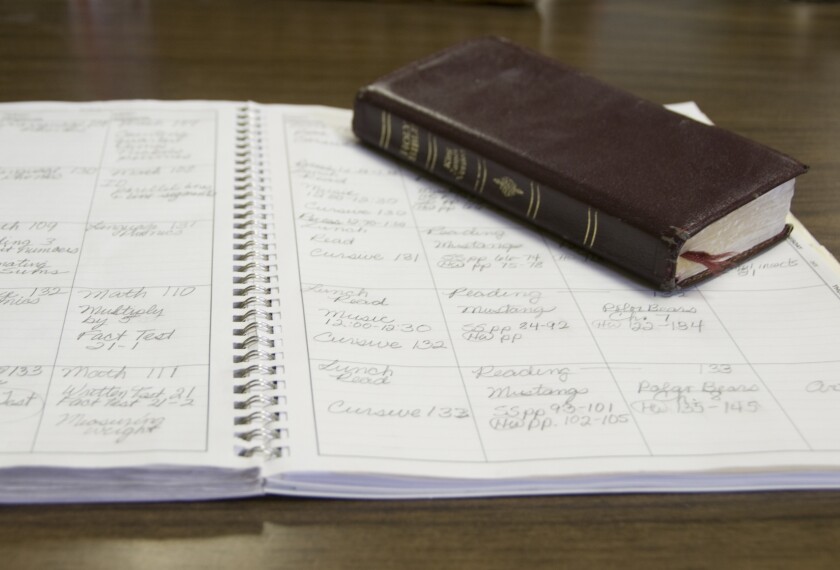As long as there have been teachers, there has been sharing: binders of lesson plans, boxes of laminated hand-drawn math games, even recycled scraps of art projects. But with the advance of the internet and particularly online social platforms like YouTube and Pinterest, the ability to develop, share, and adapt even complex curricular materials has exploded.
From Coursera’s free college classes to EngageNY’s common-core curriculum materials to physicist Henry Reich’s Minute Physics cartoons, educational materials are available at every scale online. But what makes a particular set of materials “open,” and how can schools best use these materials?
What are open educational resources?
Open educational resources are materials for teaching or learning that are either in the public domain or have been released under a license that allows them to be freely used, changed, or shared with others.
OER may include everything from a single video or lesson plan to a complete online course or curriculum and also include the software platforms needed to create, change, and share the materials.
How is OER different from other online materials?
Many materials billed as OER do not technically fall into that category. For example, a video that has a creative commons license might not necessarily be open; the agreement may instead allow it to be freely used but not altered or repurposed, according to the Organization for Economic Cooperation and Development’s 2015 study of OER. Other materials allow sharing and modifications but only within a paid subscription service. That would also not be considered OER.
That does not mean OER has to be completely nonprofit. To make ongoing OER projects sustainable, some have allowed companies to offer organized “playlists” or other curated packages of materials for a fee. Other projects, such as the SciShow series on YouTube, allow donations through patronage websites such as Patreon and Subable.
Also, because there are many different types of open licenses, OER users must be careful of the fine print about how the material can be reused, adapted, or distributed.
What does federal education law say about open educational resources?
The highlights “openly licensed content” in its definition of digital learning, noting that such resources can strengthen students’ educational experiences.
See Also: Special Report: Navigating New Curriculum Choices
In this special report, Education Week focuses on helping educators navigate an increasingly diverse marketplace of new—and often promising—curricular choices.
The law explicitly allows states to use federal block grants provided by Title IV to support local projects aimed at “making instructional content widely available through open educational resources, which may include providing tools and processes to support local educational agencies in making such resources widely available.”
And beginning in fiscal 2018, the U.S. Department of Education will require a majority of its competitive-grant winners to openly license any final products created with the money—such as teacher professional-development units, curricula, or any other copyrightable materials, as well as the supplemental materials needed to use them. The departments of Labor and State and the National Science Foundation have similar requirements for some of their grants.
“H´Ç·É±đ±ą±đ°ů, , as the Trump administration is rethinking most rules put into place under the Obama administration.
How are open educational resources used?
The vast majority of districts that use open materials include them as formal or ad hoc supplements to an existing curriculum or program. For example, teachers may use an open lesson plan online to add an enrichment activity for students or to provide additional practice for students struggling with a concept. A teacher with a limited science lab might use open online videos to craft demonstrations of classic experiments. Users have downloaded some or all of EngageNY, the Empire State’s open library of materials aligned with the Common Core State Standards, more than 45 million times.
Some schools and districts, such as the Houston public schools, have curated collections of open materials into a single digital library to make it easier for teachers to find specific lesson plans or materials for their grade level and subject.
And a handful of districts, including one in Grandview, Wash., are moving away from traditional textbooks entirely in some subjects and instead creating digital curricula made up only of open resources. These can be updated as new materials come in, but they require significant commitment to review and catalog materials for teachers.
What are the potential downsides of using open educational resources?
Because anyone can create and distribute an open resource, individual states, districts, and even teachers generally decide whether any given OER is high quality and appropriate to a particular grade, subject, or group of students. The National Council of Teachers of Mathematics warned that OER can create equity problems if different schools within the same district use materials of different levels of quality.






